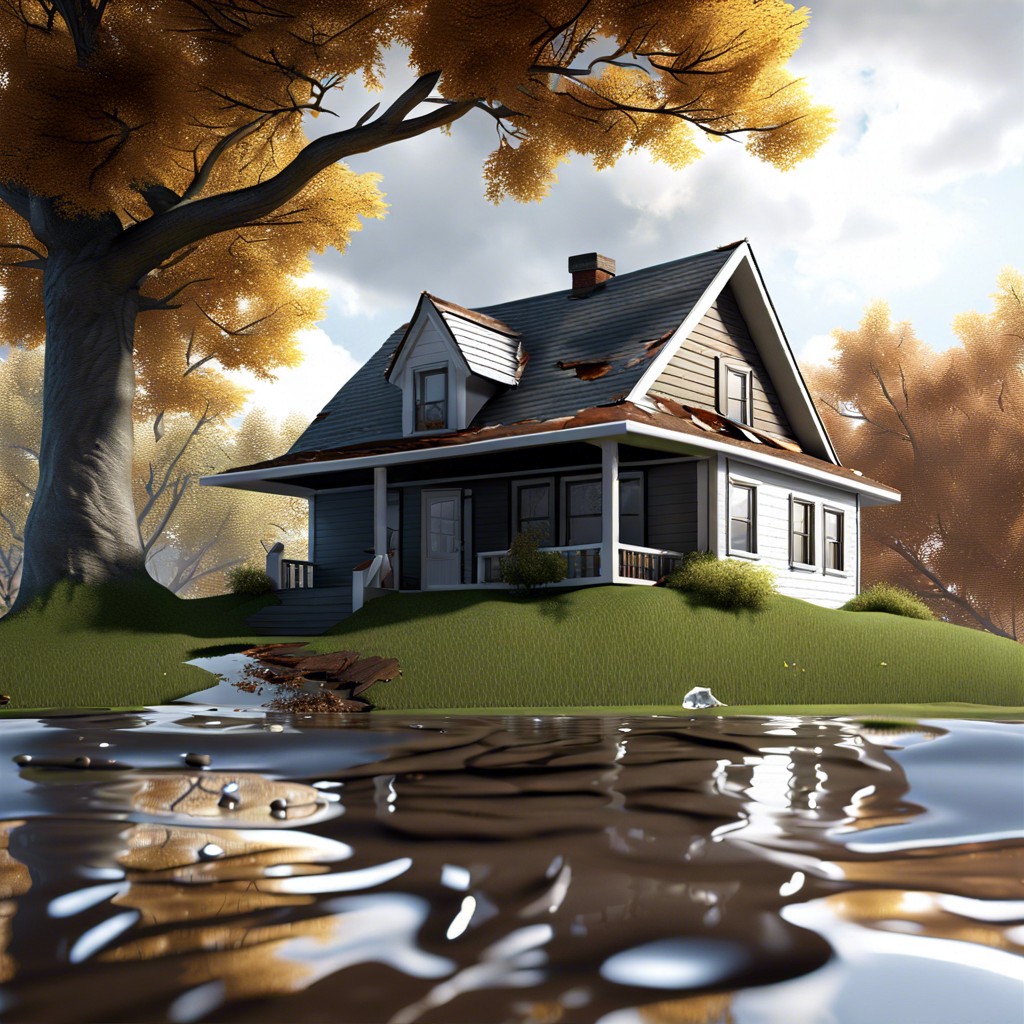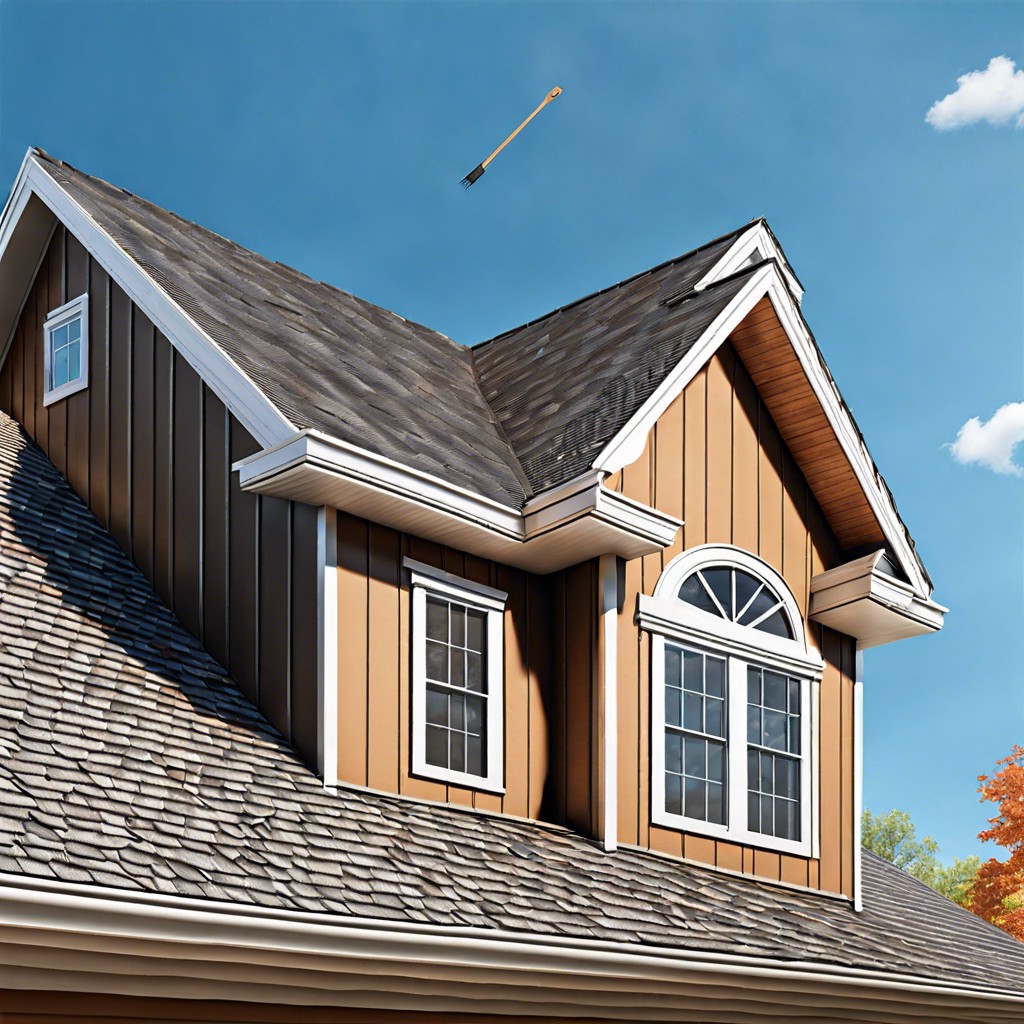Last updated on
Learn how to fix common roofing issues with straightforward repair techniques and smart maintenance tips.
Key takeaways:
- Address leaks promptly to prevent further damage.
- Look for stains on the ceiling and in the attic to find the source of the leak.
- DIY solutions include replacing shingles or sealing gaps with roofing cement.
- Factors affecting repair costs include the extent of damage, materials, complexity, and location.
- Consider hiring a professional for larger issues to ensure safety and expertise.
Leaky Roof Overview

A leaky roof is more than a nuisance; it’s a siren call for damage control. Ignoring it can lead to a domino effect of structural problems. There’s a variety of reasons for those pesky drips, from cracked flashings to missing shingles. Weather plays a villainous role too; wind and rainstorms are notorious for their handiwork on older roofs.
Addressing leaks promptly can salvage your wallet from future despair and your home from interior decay. So, buckle up and prepare to tackle the dripping menace head-on. Remember, a stitch in time saves nine, and that certainly applies to roof maintenance. Keep a keen eye on the ceiling after a storm, and don’t let small leaks rain on your parade.
How to Find Roof Leaks
Starting indoors, check for stains on the ceiling—these often signal a breach where moisture is sneaking in. Don’t overlook your attic; peek up there with a flashlight for water stains, mold, or black marks. If you spot evidence, trace the water’s path upward to where it comes in through the roof.
On a sunny day, a garden hose is handy for isolating the problematic section on your rooftop. Have a buddy soak the area just above where the leak appears in your attic. Inside, shout out when you see water dribbling in, so you can pinpoint the exact location of the leak.
Remember to inspect the roof flashing—the metal strips around your chimney or skylights. Over time, these can warp or become unsealed, making them prime suspects for leaks.
And don’t disregard your gutters. A clog can send water spilling onto the roof, creating leaks. Make sure gutters are free of debris and draining properly.
Solution for a Small Leak
Catching a small drip early can save you buckets of trouble later on. If you’re dealing with a minor leak, it’s like finding a needle in a haystack, but once pinpointed, the fix can be surprisingly simple. First, smooth sailing awaits if you have shingles; just replace a cracked or torn shingle. If the culprit is a loose or damaged flashing, a bit of roofing cement might just do the trick. Use the cement to seal any gaps where water might play the unwanted guest.
Peek under the hood – or in this case, the attic. Bring a flashlight during a rainstorm and follow the drops or visible trails. A small water spot might just need some patching up from the inside with roofing tar. Apply it with a putty knife, but be sure to slap on a decent pair, avoiding a sticky situation with your hands.
Got a flat roof? Ponding water could be your adversary. Temporary solutions like a roof patch can hold back the tide until a pro can take the helm. Remember, even if the fix seems minor, water is a sly intruder. Keep on guard and regularly check your roof’s condition to keep your home shipshape.
Roof Repair Cost Factors
The extent of damage plays a pivotal role in determining your final bill. A small patch-up is far less burdensome on your wallet than a roof pleading for extensive TLC. Materials are not all born equal; high-end options like slate may have you spending more green than you would on straightforward asphalt shingles. Complexity isn’t just for puzzles; roofs with intricate designs or steep inclines often translate to higher labor costs. Time is also a trickster when it comes to repairs. Post-Halloween or pre-Christmas rushes might see prices spike as demand outpaces the number of hands on deck. Lastly, location, location, location – it’s not just the mantra of real estate but also applies to roof repair costs, as local market rates and permit requirements can vary widely.
Professional Vs. DIY Roof Repair
Tackling roof repair on your own might seem like a cost-saving endeavor, but it’s crucial to weigh the potential risks and rewards. If you’re comfortable climbing ladders and have a knack for handiwork, minor repairs like replacing a few shingles could be within your wheelhouse. However, for larger issues, the expertise of a professional roofer can be invaluable.
Professionals bring a wealth of experience, are equipped with the right tools, and understand local building codes. They can diagnose issues quickly and provide warranties for their work. More importantly, they adhere to safety standards to prevent accidents.
On the flip side, DIY roof repairs can be fulfilling and give you a sense of accomplishment. There’s a plethora of resources — from tutorial videos to step-by-step guides — available to help you patch up minor issues. But remember, a misstep isn’t just about a botched repair; it could mean injury or further damage to your home.
Before climbing up there, ask yourself: “Do I have the right tools, safety gear, and know-how?” If you’re hesitating, it might be time to call the pros. They’re just a phone call away and often provide free inspections and quotes, so you’ve got nothing to lose—except maybe the bucket catching drips from a leaky ceiling.




